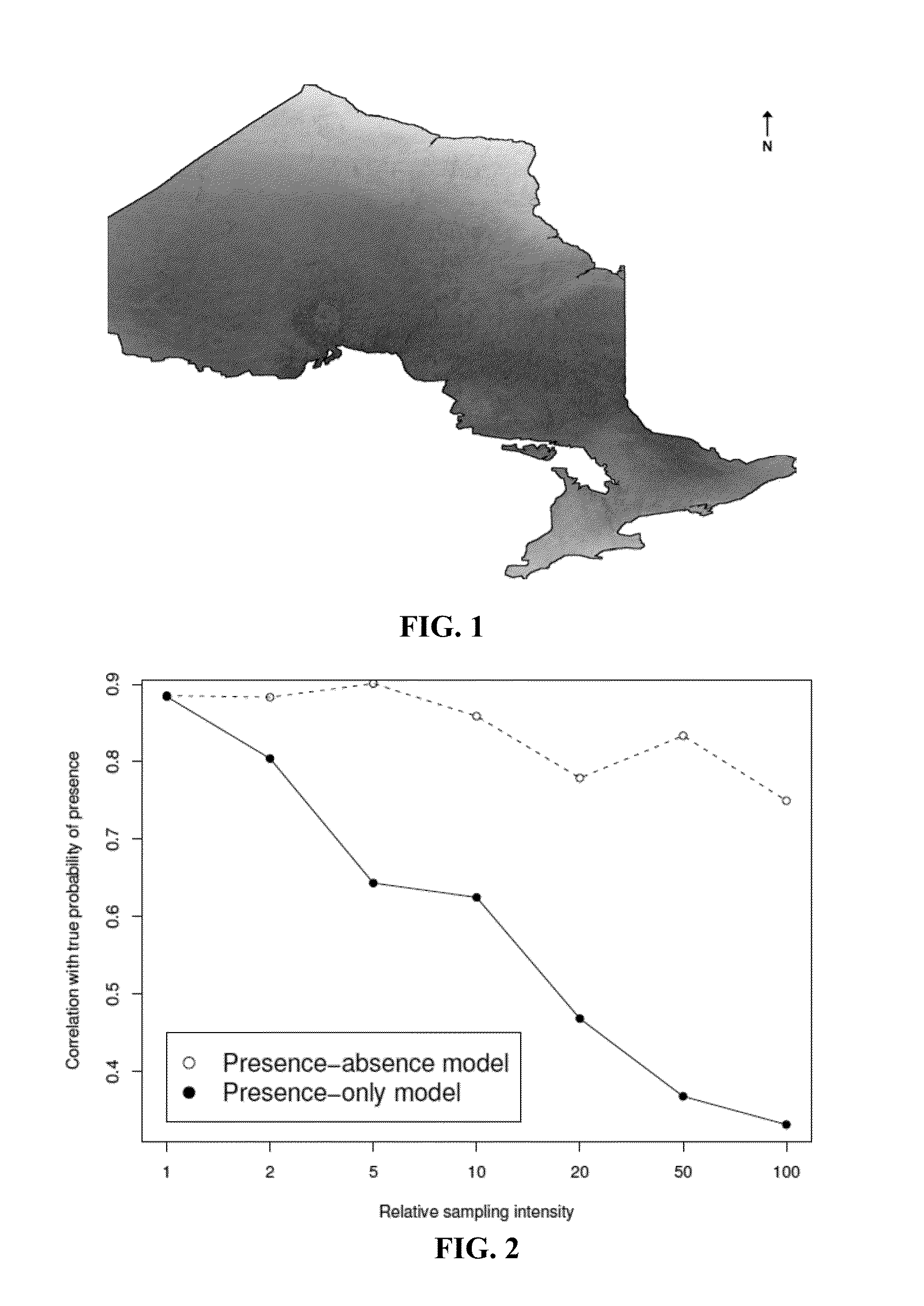Systems, devices, and/or methods for managing sample selection bias
a sample selection and system technology, applied in the field of systems, devices, and/or methods for managing sample selection bias, can solve the problems of large resource sets that are too limited to gather large sets, severely impact the quality of models, and the effect of such bias has received little attention in the sdm literatur
- Summary
- Abstract
- Description
- Claims
- Application Information
AI Technical Summary
Problems solved by technology
Method used
Image
Examples
Embodiment Construction
[0021]Certain exemplary embodiments can provide a method that can include, via a special purpose processor, automatically determining an unbiased estimate of a distribution from occurrence data having an occurrence data sample selection bias substantially equivalent to a background data sample selection bias, the occurrence data related to background data, the background data chosen with the background data sample selection bias, the occurrence data representing a physically-measurable variable of one or more physical and tangible objects or substances.
[0022]The following indented paragraphs immediately following the present paragraph describe one or more exemplary embodiments and are illustrative and not restrictive in their scope.
[0023]Most methods for modeling species distributions from occurrence records require additional data representing the range of environmental conditions in the modeled region. These data, called background or pseudo-absence data, are usually drawn at rand...
PUM
 Login to View More
Login to View More Abstract
Description
Claims
Application Information
 Login to View More
Login to View More - R&D
- Intellectual Property
- Life Sciences
- Materials
- Tech Scout
- Unparalleled Data Quality
- Higher Quality Content
- 60% Fewer Hallucinations
Browse by: Latest US Patents, China's latest patents, Technical Efficacy Thesaurus, Application Domain, Technology Topic, Popular Technical Reports.
© 2025 PatSnap. All rights reserved.Legal|Privacy policy|Modern Slavery Act Transparency Statement|Sitemap|About US| Contact US: help@patsnap.com



